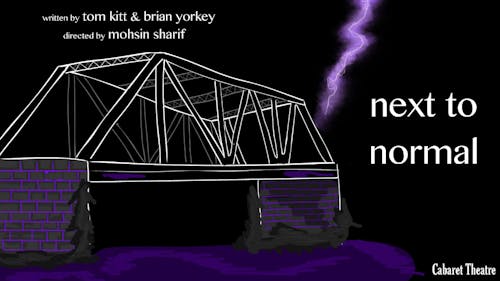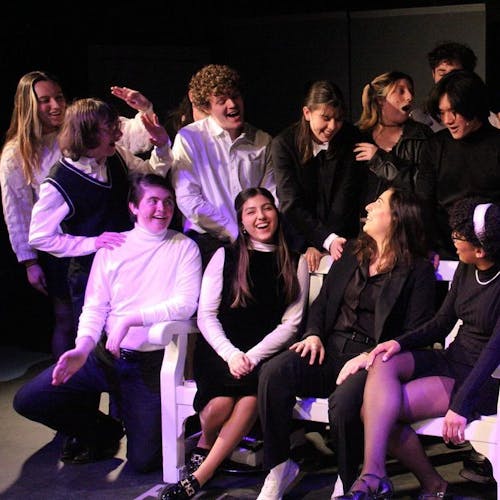U. theater troupe tackles mental health in 'Next to Normal'

The Rutgers University Cabaret Theatre presented “Next to Normal” between the evenings Dec. 5 to Dec. 8, where Rutgers students showcased their theatrical talents through remarkable acting, singing and sound/artistic directing.
“Next to Normal,” written by Tom Kitt and Brian Yorkey, was an award-winning musical on Broadway that ran through 2009-11, winning multiple Tony Awards and the 2010 Pulitzer Prize for Drama. This time, directed by Mohsin Sharif, Cabaret Theatre brought back the musical with all of its compelling elements.
As overhead lights illuminated the room and anticipation was growing for the opening scene, I was not yet aware of the intensity of emotions that were going to hit the audience from start to finish. The story addressed emotionally heavy topics such as mental health, drug abuse and family dynamics. It further shed light on the choices made in marriage and psychiatric practices, which all contributed to the issues developed in the household.
John Hennessy, a School of Arts and Sciences junior, was the scenic and lighting designer for “Next to Normal,” and is the current producer of Cabaret Theatre. He described how the staff members manage the production of an emotionally heavy story.
“For this process, we just had to take a lot of care of the mental health and well-being of everyone who was working on it," he said.
"When you have a cast, a staff and a pit who is engaging with such challenging material both in terms of the notes on the page are hard and difficult to sing, but also it’s just embodying these characters and feeling these emotions — there’s a lot that’s happening that’s quite heavy. So, we really just take a lot of care and a lot of steps, so that any time anyone is feeling uncomfortable or anything goes too far, we’re able to step back, reel it in, check and protect each other.”
The single household in the production that is exposed to the audience arouses various feelings of empathy. Through the outsider perspective and expressive acting from the performers, the viewers got to hold a magnifying glass near the deepest personal issues of each family member, which are normally covered through the facade of a stable family.
“There is a song in the show called ‘Aftershocks,’ which I think about a lot,” Hennessy said. “I think what is more important than the origination of what happens with the mental illness is the aftershocks — the way they spread to the families and the extended families, and in the way they surround other people. So, I think it’s really powerful in that you see how mental illness not only affects the person who has the mental illness, but also everyone around and how that kind of spreads.”
The musical accurately displayed how the expected intimacy of family becomes a double-edged sword. The connections tightly woven through blood are sensitive as much as it is infectious, and the mental illness of one person can sweep across the entire family. The disguise behind the workings of a family and the inner conflicts of betrayal and disbelief are aspects that all can reflect upon in this performance, when closure is often difficult to find with these subjects.
Audience member Jenna Flanders, a School of Environmental and Biological Sciences junior, described her thoughts about the production and the topics it handled: “I thought it was a very poignant show. I really liked how there was a ray of hope at the end, and I felt that the portrayal of mental illness was realistic and very moving.”
Perhaps it was because it highlighted topics that society considers to be more sensitive to discuss publicly, but the aspect that was particularly touching was the vulnerability of the characters. The performers did an immaculate portrayal of the complex conflicts in the characters.
They particularly shined in the emotional moments (which were in most of the scenes), consistently delivering exceptional voice control in their lines and songs. The visual and sound elements further emphasized the intensity of the character interactions.
Performance allows the viewer to resonate with the scenes that make difficult subjects feel so real because fiction can touch people in a way that is almost physical. Similar to a reflection, the performance felt like it could serve many purposes due to the realistic nature of the story.



